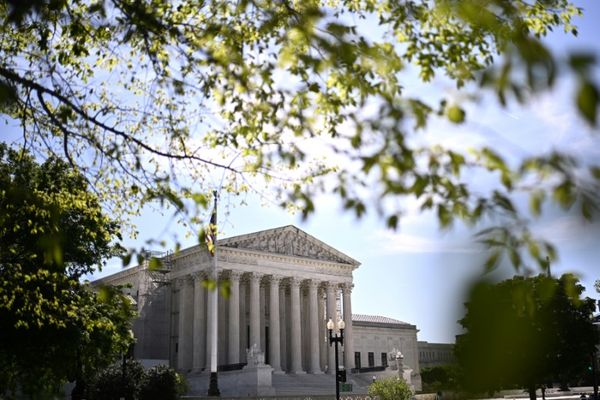
A fashionable critique of much political punditry is that it’s theater criticism, too focused on personality and superficial action, not focused enough on the real stuff of policy.
But we’re talking about Kyrsten Sinema today, the senator from Arizona who loves to create drama. And that’s the best way to understand her announcement this morning that she has changed her affiliation from Democrat to independent.
Here are two conflicting ways to understand Sinema’s move: In one, she was never really a true Democrat anyway, and this simply ratifies what everyone already knew. In the second, she’s still a Democrat, this is nearly pure performance, and she will continue to be a crucial and mostly reliable member of the Democrats’ thin majority. Both of these views might prove right.
Let’s start with the first. Joe Manchin of West Virginia has gotten more of the attention, but Sinema has been perhaps the most maddening alleged member of the Democratic caucus. Manchin can be fickle and confusing in his statements, but he is who he’s always been: a middle-of-the-road guy with good electoral instincts, decent intentions, and bad ideas, as I put it last year. He is happy to buck his party, but he often seems genuinely anguished about the choices he has to make.
Sinema is different. She’s ideologically unpredictable and erratic; how else could someone go from being a radical anti-war activist to identifying John McCain as her political role model? No one seems to know what to expect from Sinema and she often won’t tell them, which makes her both a bad caucus member and a bad bargaining partner. You can’t negotiate with someone who won’t say what she wants. She also seldom attends caucus meetings.
And when she is explicit, many of her ideas are misguided. Consider her stance in favor of a loophole for carried interest—essentially a way for a few rich people to shield themselves from taxes, hardly a bread-and-butter Arizona issue—and against a plan to reduce prescription-drug costs. The latter was so pointless that one Democrat fumed at her inconstancy and obstinacy: “We had a senator from Arizona who basically didn’t let us go as far as we needed to go with our negotiations and made us wait two years.” That Democrat was Manchin.
So when Sinema switches her affiliation, she’s really telling everyone what they already knew: Of course she’s not a Democrat.
All of this is true, and yet Sinema’s unfaithfulness has always been a bit overstated. No one can dispute that Sinema’s views have limited the scope of some Democratic legislation, as in the cases above. She also takes a lot of the blame for blocking changes to the filibuster, but it’s impossible to know whether other Democrats would really support changes in an environment where they were unable to hide behind her and Manchin, as they can do now.
But Sinema has mostly been there when Majority Leader Chuck Schumer needed her. FiveThirtyEight calculates that she votes with President Joe Biden 93 percent of the time, more than Manchin, Jon Tester of Montana, Jacky Rosen and Catherine Cortez Masto of Nevada, and Bernie Sanders of Vermont, an independent who caucuses with the Democrats. These percentages can be misleading, because not all votes carry equal weight. But consider judicial nominations, perhaps the most important thing for Democrats over the next two years. Sinema voted to confirm Justice Ketanji Brown Jackson, and as of February, she hadn’t voted against a single Biden bench nominee.
Sinema could stop that, of course. She hasn’t been explicit about all the details of her plans. When Jake Tapper asked her how the switch would affect Senate control, she dismissed it as “a kind of D.C. thing to worry about,” which is a funny thing to hear from a United States senator who works in Washington.
So far, however, she has offered some indications of consistency. She wrote in an op-ed, “Becoming an Independent won’t change my work in the Senate; my service to Arizona remains the same.” She also said that she intends to continue serving on committees as appointed by the Democrats and that she won’t caucus with the Republicans; the White House issued a conciliatory statement saying, “We have every reason to expect that we will continue to work successfully with her.” People know better by now than to take Sinema’s word to the bank, but under the circumstances, these are encouraging signs for Democrats.
Sinema’s switch is less about how the Senate functions for the next two years and more about the end of her term in 2024. Although she has not announced whether she intends to run again, she faces difficulties. A poll in September found she had just a 37 percent favorability in Arizona (against 54 percent unfavorable views). Even among independents, only 41 percent held a favorable view. Democrats, led by Representative Ruben Gallego, are eager to mount a primary challenge.
The midterm elections shifted the ground under Sinema. Raphael Warnock’s reelection victory this week meant that with 51 Democratic senators, she was no longer so powerful a vote. And a Democratic sweep in Arizona suggested that the state has moved a little more toward the party, with the danger that she could be left behind. By declaring independence, Sinema seems to be grasping for a lifeline, or at least a bit of leverage. She won’t have to face a Democratic primary she would probably lose, and her former compatriots will have to consider whether their desire for a reliable Democrat is worth the risk of splitting blue votes and electing a Republican, especially in what’s expected to be a tough Senate year for Democrats.
That means Sinema will be a perpetual pain for Democrats over the next two years. But what else is new?







